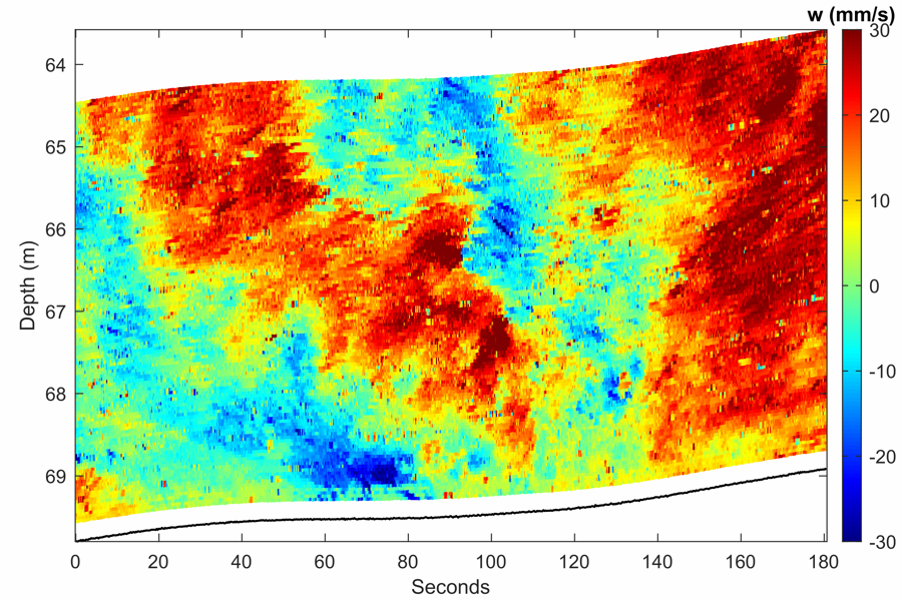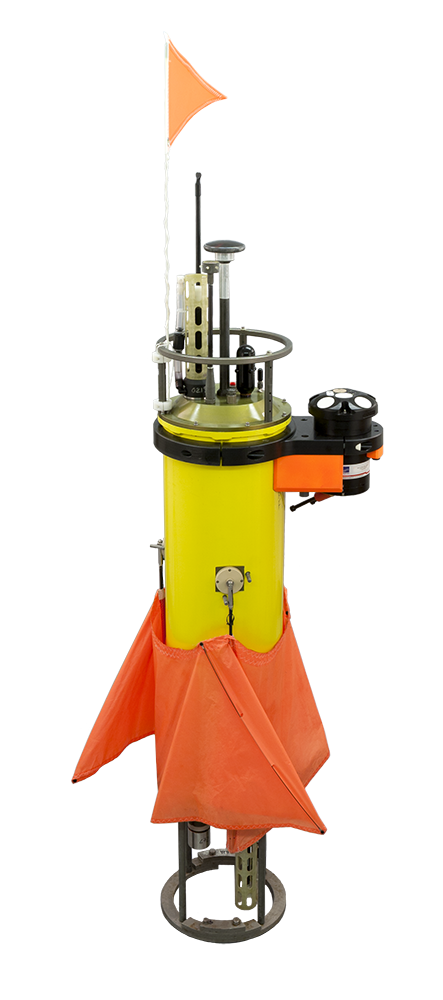
U. Washington/APL use Nortek’s Signature1000 to observe fine-scale oceanic velocity structures
It is widely recognized that of all the acoustic Doppler techniques available, the Pulse Coherent method (aka “High Resolution” or “HR”) provides the best range and time resolution of any ADCP processing technique. Data collected in HR mode can look like text book examples of fluid flow or even works of art in the way it allows you to visualize motion to scales that we normally do not see.

The featured data above were collected as part of a project lead by Dr. Andrey Shcherbina and Eric D’Asaro at the Applied Physics Lab at the University of Washington in the United States. Their goal is to develop Lagragian floats that can provide long-term targeted measurements of fine scale velocity structures in the surface boundary layer across the world’s oceans. To achieve this, they turned to Nortek’s Signature1000 ADCP and the pulse-coherent method it employs.

Lagrangian float developed by UW/APL to observe fine scale velocity structures. An upward looking Nortek Signature1000 can be seen adapted to the top-right of the float.
Pulse-coherent processing is powerful but when used incorrectly, pulse-coherent can return invalid velocity data. The core reason is that the Pulse Coherent method uses the phase difference between the pulses in a pulse-pair to measure the velocity, and phase can only be unambiguously determined within ± 2π (or ± 360° in terms of degrees). In practice, this means that approach is confined to be used in slow moving water (tens of cm/s) and over short ranges (less than 1-2 m). Nortek offers a Practical Primer for Pulse Coherent measurements where we discuss this and other aspects of this method in greater detail.
In UW/APL’s project, handling slow velocities (few cm/s) was well within Nortek’s existing implementation of the Pulse Coherent method. But, the research also called for as much range as possible in order to capture the fine scale velocity structures of interest. So to achieve this and still maintain the time-space resolution afforded by the Pulse Coherent method, Nortek implemented a novel approach called the Multi Correlation Pulse Coherent method.
Invented by Nortek engineers as part of the development of an advanced 3D current profiler with co-located sampling volumes, the Multi Correlation Pulse Coherent (MCPC) method expands the application by expanding the profiling distance beyond what has traditionally been possible. Details about the MCPC were first published in this paper.
For APL, the new method allowed the HR-mode to operate over a 5-m range with the Signature1000 mounted on the float. The results, as well details on the data processing done, have been published in this paper.
Nortek is pleased to have been able to add to measurement capability available to the scientific community. The exclusive Multi Correlation Pulse Coherent method expands the might of the pulse-coherent method, providing scientists not only with the best tool for the job, but also the ability to skillfully wield it.